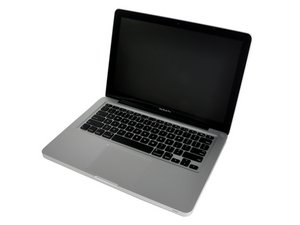Start it up normally then hold the Option key for a bit. Eventually a menu will appear and see if you can select your normal startup drive in the list. If it boots properly, then you can go into the settings and configure your startup drive. Might have just messed up somehow.
If it doesn't detect or doesn't boot still, you might need to repair the drive.
Follow this for a legit tutorial: Apple Official website
Mostly need to check the following:
- If your Mac doesn't get past the flashing question mark
- If your Mac starts up to a gray screen (with no flashing question mark) or a flashing question mark or flashing globe, give the computer a few more moments to locate its system software. If you normally start your computer from an external drive (Thunderbolt, FireWire or USB) make sure the drive is connected and powered on.
- If your computer still does not start up, try the next set of steps to help your computer find its system software.
''Turn off your Mac by pressing and holding its power button for a few seconds.
Press the power button once to turn your Mac back on. Then, hold down the Option key on your keyboard until the Startup Manager appears.
Select your startup disk from the list of drives that appear on screen.
If your computer finishes starting up normally, choose System Preferences from the Apple menu. Then, click the Startup Disk icon in the System Preferences window.
Select your normal startup volume (such as Macintosh HD) from the list of drives that appear in the Startup Disk window.''
If your installation of OS X needs repair
If you don't see your startup disk displayed in Startup Manager, or if you see a prohibitory symbol (⊘) appear, your startup drive may need directory repair, or OS X may need to be reinstalled.
''If you only see a disk named "Recovery HD" in Startup Manager, select it instead. You can also start from OS X Recovery by holding down Command and R on the keyboard at startup.
From the Utilities menu, choose Disk Utility.
In the Disk Utility window that appears, select your startup disk (usually named "Macintosh HD") from the left side of the Disk Utility window.
Click the First Aid tab.
Click Repair Disk to verify and repair any issues with your OS X startup disk.
After repairing the disk, try to start up normally.
If none of these steps resolve the issue, start from OS X Recovery and reinstall OS X.''


 35
35  329
329  970
970 

1 comentario
Did the SSD ever work on this machine?
- de mayer